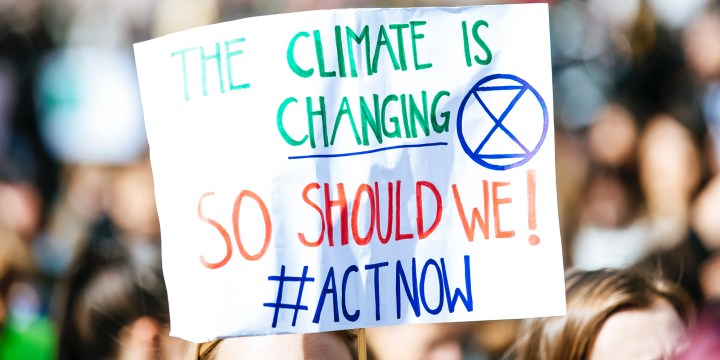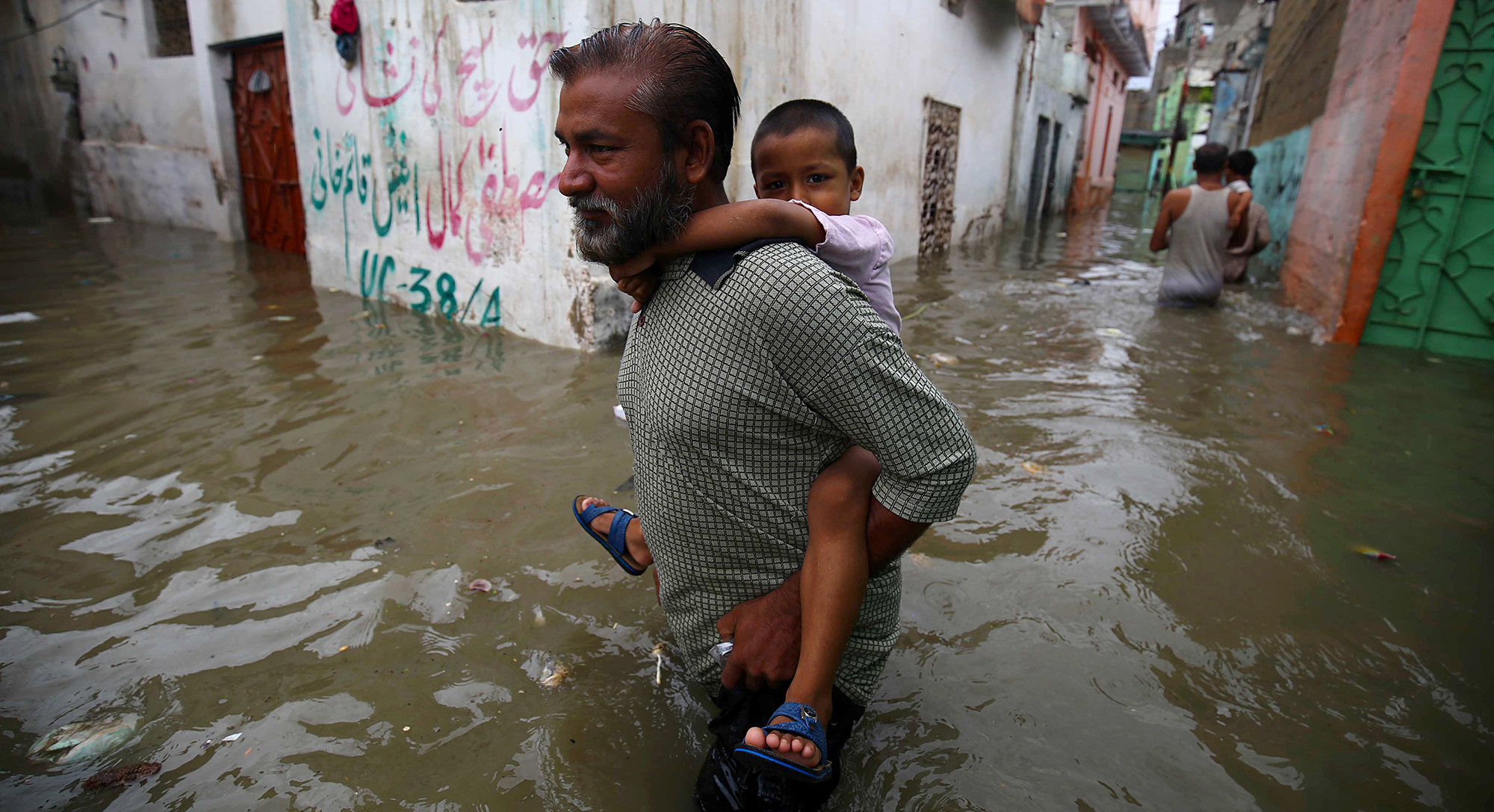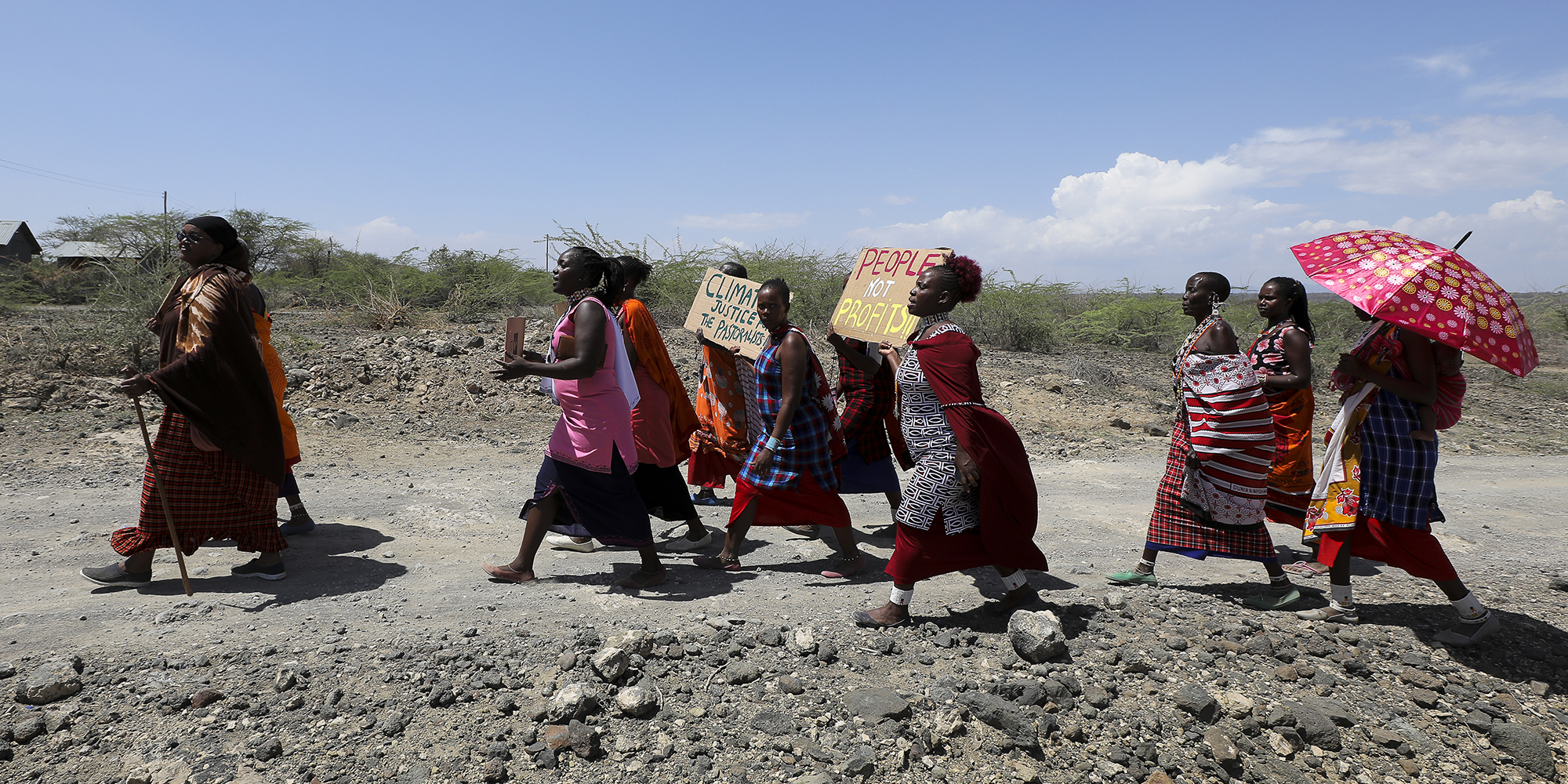THE BIGGER PICTURE
On the fence about climate change? We check the facts with scientific experts

Most people agree that climate change is real, but for those fence-sitters, we spoke to climate experts to address some of the key arguments of sceptics.
Are extreme events such as massive rainfall, droughts, heatwaves and wildfires an indicator of climate change or, as conservative US political commentator Tomi Lahren asks below, just part of the Earth’s natural climate variation?
Is it climate change causing the extreme weather or is it..I don’t know…hurricane and fire season?
— Tomi Lahren (@TomiLahren) September 7, 2021
Willem Landman, a professor of meteorology at the University of Pretoria, and a specialist in seasonal to decadal forecasts points out that we can’t attribute every extreme weather event to climate change.
“When you say the climate has variations, you don’t deny that climate change is not a real thing. I’m just arguing that you cannot blame everything that is different… to be related to climate change.”
Landman explained that climate variability is when aspects of the climate differ from the average — like one year having a hot summer and the next a cooler summer.
How can we tell the difference between climate change and climate variation?
“I’ve had the same arguments, and they can never explain why they leave the overwhelming natural drivers of climate out of their data: solar output, volcanism and oceanic systems. When you add all the data in, their fear-mongering falls apart.” — Anonymous sceptic
Peter Johnston, a climate scientist at the University of Cape Town, explained that: “Natural variability is the natural variation in temperature due to seasonal cycles, due to what we call ocean dipoles, or ocean oscillations, of which El Niño is one.
“And these cause warmer years and cooler years; even a volcanic explosion will cause a cooler year because it blocks out some of the sunlight.
“You can’t really talk about climate unless you’ve got data from 30 years,” explained Johnston.
Scientists calculate the average temperature over a particular 30-year period, then take a previous or later 30-year period and see how the averages compare.
“If those averages aren’t the same, then you would say the climate has changed,” said Johnston.
“If those averages are the same, then you can say within those 30-year periods the different warm and cold years are just natural variability.
“So natural variability means that there will be warmer and there will be cooler years, but the average won’t change.”
Rainfall, heat and droughts are all naturally occurring phenomena and the Earth has variations where there are years with more or less of these events. The key is that this is natural and would occur even if humans weren’t here. Climate change, however, is an anthropogenic adjustment in the climate — the change is caused by humans.
How eThekwini staffers tried to hijack food meant for rescuers of the dead and displaced
Earth system models: ‘the gold standard in attribution’
Landman explained that Earth system models (ESMs) are “very sophisticated models… which use Newton’s equations of motion, that are coded into a program, that can explain how the atmosphere behaves.”
Data is input into these models to simulate climate responses.
“For example, if you input how the sea surface temperatures over the central Pacific Ocean increase or decrease, it should be able to simulate the El Niño and La Niña responses globally,” said Landman.

A man carries a child as he walks through a flooded area after heavy monsoon rains in Karachi, Pakistan, 11 August 2019. EPA-EFE/SHAHZAIB AKBER
“There’s got to be some form of verification on present climate to see whether or not we can believe the projections for a future climate.”
This is exactly what these models do. They have tested to see what the world would look like if humans weren’t around and never contributed to greenhouse gas emissions, and compared it to the current reality.
Christopher Trisos, a senior researcher at the African Climate and Development Initiative at UCT and the coordinating lead author on the Intergovernmental Panel on Climate Change’s (IPCC’s) sixth assessment report’s Africa chapter, explained that the reason we know climate change is caused by humans is the computer simulations scientists run in these ESMs.
“Imagine we just never put all the greenhouse gases into the atmosphere since 1900,” said Trisos.
“They’ll do a simulation… how many extreme heat events would you have had, how many droughts, etc. And then they compare that to the climate we actually have now. ”
With regard to heatwaves, Trisos said, “In the climate that didn’t have any greenhouse gases since 1900 — we’re seeing that, yeah, there would have been some heatwaves that killed some people.
“But what we’re seeing with the human greenhouse gases is there’s an additional 44% of deaths happening,” said Trisos, explaining that this is because heat events have become more frequent, more extreme and intense and longer in duration.
The IPCC report Trisos worked on found that recent estimates suggest that human-induced climate change was responsible for approximately 44% of the roughly 20,000 heat-related deaths in South Africa since 1991.
Trisos explained they can make these estimates because South Africa has very good records of daily temperatures dating back to at least the 1960s from weather stations, and to the 1970s from satellites.
“So that gives them some confidence that it’s correct,” said Trisos, who calls ESMs “one of the gold standards of attribution”.
Landman explained that climate scientists are best able to capture the present climate (especially increasing temperature trends) when they introduce anthropogenic components (like fossil fuel emissions) into the ESMs.
With these accurate models, scientists input “anthropogenic forcing” and temperature trends and allow the model to run for a couple of decades ahead, which is how scientists have been able to predict what our future will look like with limited mitigation.
“By the year 2100, in the worst-case scenario, with very low mitigation, we’re going to see temperatures as much as four degrees warmer than average in South Africa,” said Landman.
“That is really huge.”
Piotr Wolski, a senior climate researcher at the Climate System Analysis Group at UCT, was a contributing author for the World Weather Attribution’s study that found the 2015-2017 Cape Town drought had been three times more likely to occur because of climate change.
Wolski explained that a drought of that magnitude should only happen once in 300 years. But in the anthropogenically influenced climate, it happens once in 100 years.
“It has a higher probability of occurrence much more frequently. But it doesn’t mean that it wouldn’t have happened [without the influence of humans] — it would happen less frequently.”
But it’s freezing right now. How can the planet be heating?
I guess spring is not coming earlier this year.
Global warming downer. https://t.co/feOxZHlNGd
— Steve Milloy (@JunkScience) April 10, 2022
“Those people are correct when they say that we are observing a cooler climate,” said Landman.
“But, this cool climate that we are experiencing now, seasons like this will become less — fewer of these seasons can be expected. Remember, when we had that very hot summer in 2016? We are going to see more of those.”
Landman said that in the coming years we will see a reduced frequency of very cold winters and an increased frequency of warm winters — which doesn’t mean there won’t be cold winters in between.
What about the Ice Age? Isn’t this part of the Earth’s natural cycle?
Climate evolved over billions of years, an entirely natural process that continues today. The atmosphere & deep oceans come from volcanic & tectonic forces & cycles of the sun. World temperatures & carbon dioxide are in long-term decline – the real peril facing life on earth. pic.twitter.com/0mi5QZiTTs
— Peter Clack (@PeterDClack) April 8, 2022
Comments collected from comments online:
- “It [climate change] does not exist. We are witnessing regular cyclical meteorological changes.”
Read “The Real Global Warming Disaster” by Christopher Booker. Temperatures have been fluctuating for millions of years on Earth. Why can’t British Academics face facts and say it as it is. Good on you Australia.
— Robert Glassborow (@Bobgboro) October 24, 2021
- “Earth has been hotter than that but here we are.”
- “The level of C02 as of current isn’t the highest it’s ever been in the geological timeframe of the earth!”
2)> it is scientifically known and proven that the Earth has been much hotter & wetter in the past, within different cycles of its existence, even long before the human-animal ever came into being!
Life was flourishing and most abundant at that time, humans now just look at ⤵— Gino (@Gino08235904) July 21, 2021
Pedro Monteiro, a chief oceanographer at the Council for Scientific and Industrial Research and a specialist in ocean carbon and its links to climate, said in response to comments like this, “Yes, this is correct, it [the temperature] was higher prior to five million years ago.
“However, there are at least four aspects that make the contemporary period unique:
- “In that world before five million years ago, the climate was far more extreme in respect of heat, wetness and aridity, which would make modern life short of impossible, particularly for the large and globally distributed human population.
- “Contemporary atmospheric CO2 concentrations are the highest for the past one million years, during which time the planet developed the more stable interglacial climate periods that enabled humans to emerge and thrive.
- “A key uniqueness of the contemporary period is not only the high CO2 in the atmosphere but the rate at which it is growing, which is unprecedented in the past 60 million years. This is important because it shows that we are increasing CO2 at a rate that is much faster than the capacity of the planet’s carbon cycle to compensate, mainly through the oceans.
- “The global ocean ecosystems are adapted to the low atmospheric CO2 of the past one million to five million years, which has supported the growth of coral reefs and many shell-building organisms and plankton which make critical contributions to ocean biodiversity and the carbon cycle.”
Francois Engelbrecht and Coleen Vogel, from the Global Change Institute at Wits University and contributing authors to several IPCC reports, said: “The IPCC Working Group I’s Sixth Assessment Report gives as the best estimate of global warming to date the value of 1.1°C above pre-industrial (1850-1900) levels.

Kenyan women from the Maasai community take part in the Global Climate Strike in Magadi, Kajiado, Kenya, 25 March 2022. (Photo: EPA-EFE / Daniel Irungu)
“This is likely the warmest Earth has been in 125,000 years. It is possible that during the last interglacial [period], about 125,000 years ago, Earth has been warmer. Such past periods of higher temperatures were caused by slow changes in the orbital characteristics of Earth, occurring over tens of thousands of years.
“The warming that has occurred since the pre-industrial era is rapid and cannot be explained by any natural process, including slow orbital changes or changes in solar activity (no systematic trends in incoming solar radiation that can explain the warming since the pre-industrial era).”
Is it even worth having this debate?
Most probably those who are true sceptics of the climate crisis narrative won’t be reading this. Some might say, and many already have, that this conversation isn’t worth having.
Bruce Hewitson, a professor at the Department of Environmental and Geographical Science at UCT and a research chair at the Climate Systems Analysis Group said: “Answering the denier positions is not possible in one-liners… one ends up in a ‘gish gallop’, with people looking for confirmation bias and largely ignoring your answer while throwing up yet another objection.”
While this is true, we still have the responsibility to try.
As the late Desmond Tutu said: “Twenty-five years ago, people could be excused for not knowing much, or doing much, about climate change.
“Today we have no excuse.” DM/OBP





















 Become an Insider
Become an Insider
Comments - Please login in order to comment.